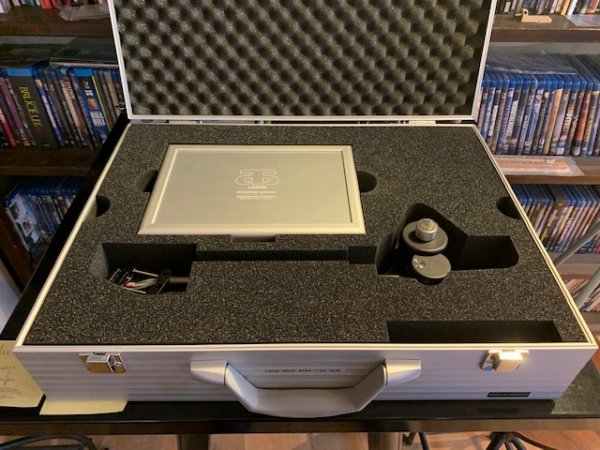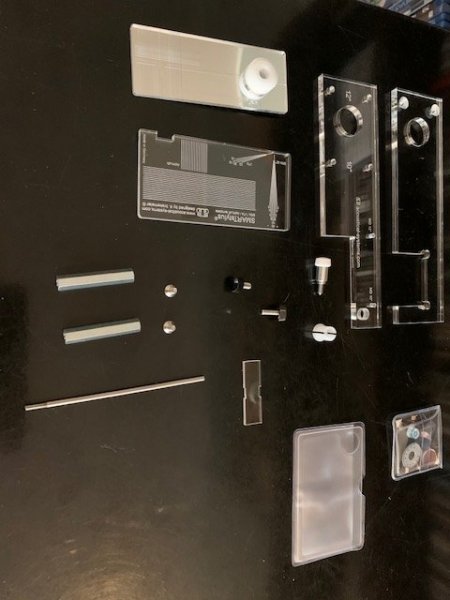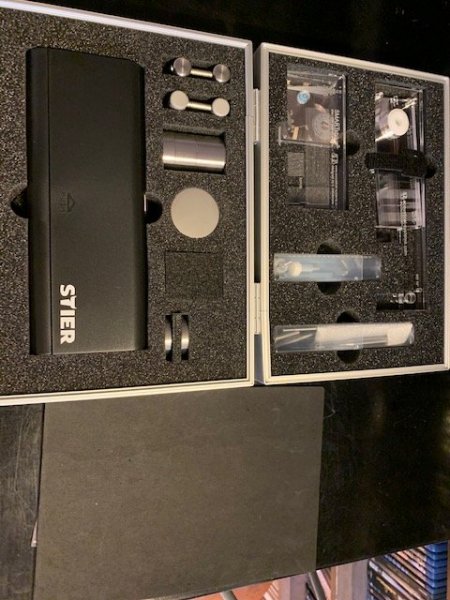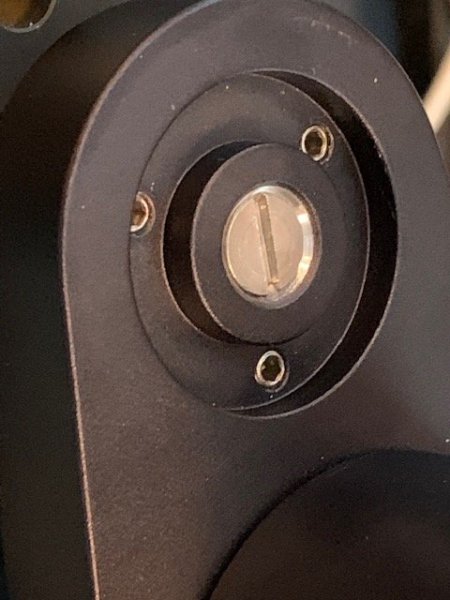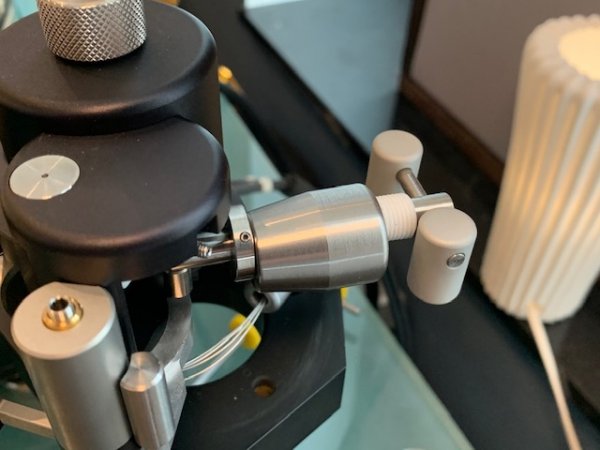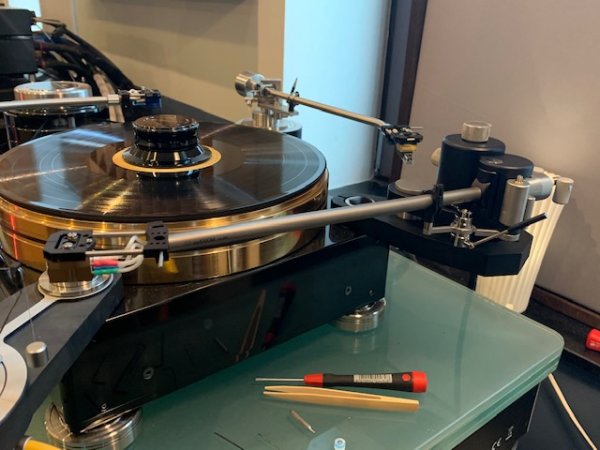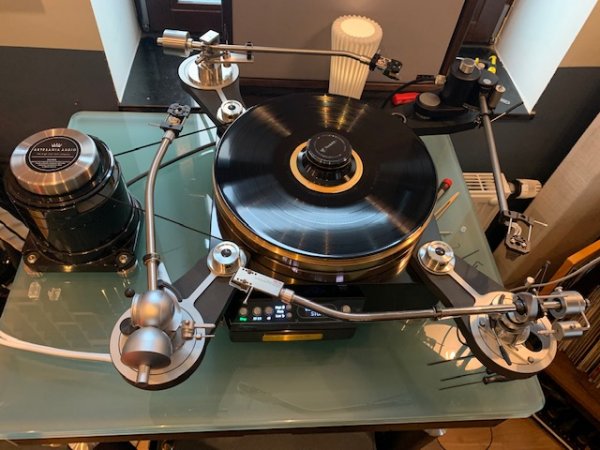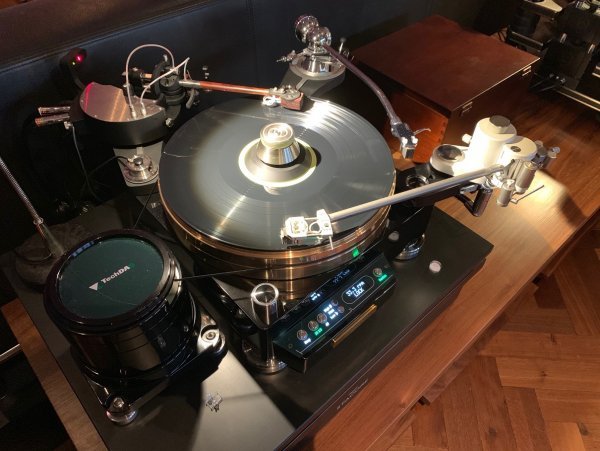After some days with the Axiom, I like to share some thoughts and experience :
Prior to any listening, the fitting starts

The Axiom comes in a nice alloy case, everything has his place.
Reading the manual explains, the a M5 in 233mm is needed.
Dietrich Brakemeier sent me the SME adapter plate as well, so I had 3 choices:
- alloy 9' SME Basis (TechDAS AFV design) , to be used with the AS SME adapter
- alloy 12" Ikeda base (TechDAS AF3 design), space enough to drill the M5
- Micro Seiki AX6G Gunmetal base with already drilled M5 (originally for a tonearm rest)
So I called Dietrich to ask for advice. He explained, that the sound conductivity of gunmetal is higher than of alloy and that he would prefer for the Axiom the Gunmetal version, followed by the more massive alloy base and at last the usage of the adapter plate.
I liked this advice, as no need for drilling

The Axiom comes with 3 different solids steel spacers to get the correct base height to match the turntable platter height.
The spacer has 2 different sides, one with a small ring to increase the pressure in direction of the AX6G and to improve the energy transfer. The other side is flat and will become the surface for the 3 adjusting spikes.
On every turntable the tolerances of the parallelism of the platter surface and the arm base surface ist important and mostly not 100% given.
If you add the length of a 12" Tonearmbase plus the length of a 12" arm as such, you will see, that even 1/100 of a mm surface tolerance can become a serious adjustment situation for the Azimuth. As the Azimuth is in most tonearm Designs easy to fine-tune, the bearing of the Tonearm still "sees" this tolerance.
To my knowledge the Axiom provides on this matter a unique solution. Around the M5 screw are 3 spikes placed.
With the supplied spirit level it is now possible to tune the Axiom in the best parallel way, so that the bearing can move with minimal resistance.
Dietrich definitely prefers to reduce the forces to the bearing, so he likes, that even the tonearm tube as such is fitted in a parallel way only. All adjustments to the cartridge should be done on that place, where the cartridge is fitted, means the Axiom headshell can be used for the VTA optimization as well.
Following the instruction, the Axiom was fitted fast and straight forward. Like many "good old times" tonearms , the Axiom comes with lateral weights as well. It is possible to choose between 2 material in different weight to compensate different cartridge weights.
The counterweight come with 2 additional parts to increase the weight as well. An interesting fine tuning is now possible.
Every Cartridge (needle/cantilever, rubbering) assembly has its own spring constant, which can partly be seen in the compliance as well. You can balance a cartridge with a light counterweight and a bigger distance to the bearing or with a heavy counterweight close to the bearing point. This will change the parameters of the tonearm in a way, that a best match to the cartridge is possible.
70% of the VTF is static and to be done with the position of the counterweight. 30% of the VTF can be fine tuned with a magnet mechanism.
I am very sensible to VTF adjustments and I like, that with the Axiom this can be fine tuned during playing, so very easy to hear the "best" VTF. Antiskating is similar and can also be done during play.
Very special is the Axiom Antiskating. The Antiskating forces to the diamond of the cartridge are not constant over the radius of the platter. But nearly all tonearms only allow to adjust a constant force, which than is linear over the radius.
The Axiom provides a design feature, which is a dynamic Antiskating over the radius of the platter.
To work in the best way, the starting point needs to be defined. Installing of the Axiom has one parameter more, than other tonearms: The Distance between the headshell and the outer ring of the LP should be in the region of 8,5 cm.
My Axiom was ordered with a continues wire from headshell to XLR connector.
As first cartridge I have chosen the Mutech Hayabusa, as I know the cartridge very well and in different tone arms.
The Axiom comes with a full set of adjusting material, following the unique geometry of the AS AXIOM.
As you can see on the picture, a lot of parts need to be assembled to start the perfect placement of the cartridge.
But I could not wait to have the material assembled, so I only used the correct zero point .
Starting point of listening was all measurable on specification, means full parallel und VTF on midpoint of spec.
Now I am listening

And will describe later my first listening impressions.
